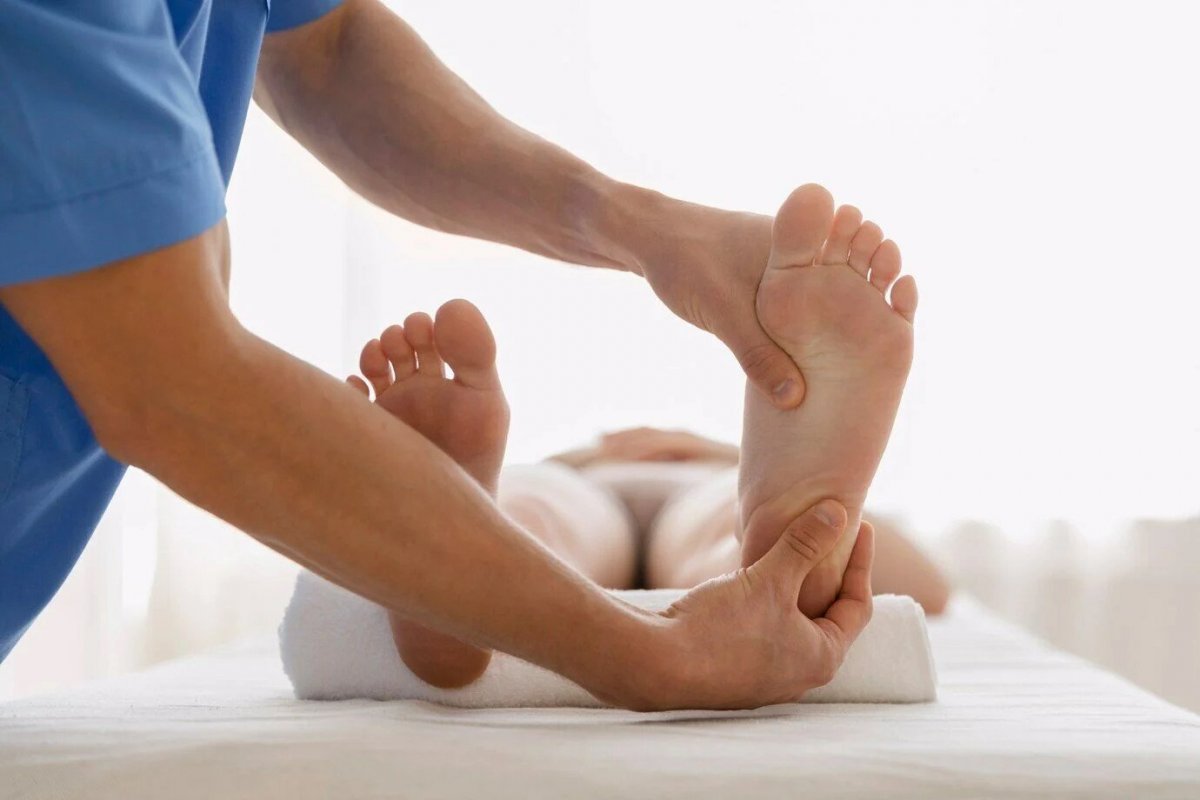-
Posts
37,057 -
Joined
-
Last visited
-
Days Won
5
Content Type
Events
Forums
Downloads
Quizzes
Gallery
Blogs
Everything posted by CharlieH
-
The Color of Your Urine: What It Might Say About Your Health Urine color can provide valuable insights into your overall health. While most variations are harmless and influenced by factors like diet, hydration, or medication, some changes might signal underlying health issues. Regularly checking the color of your urine can help you detect potential problems early. What Is a Normal Urine Color? Healthy urine is typically a light yellow color and mostly transparent. Proper hydration results in clearer urine, while dehydration makes it darker. If you are well-hydrated but notice persistent cloudiness or if your urine appears clear despite limited fluid intake, it could indicate an underlying health condition. What Different Urine Colors Could Mean Transparent or Colorless: This could indicate overhydration, leading to a depletion of essential vitamins. Persistent colorless urine may also suggest conditions like diabetes, kidney disease, or the effects of diuretics. Occasionally seeing colorless urine is not a cause for concern, but if it happens regularly, reducing fluid intake and consulting a doctor is advised. Cloudy or White: Cloudy urine may result from urinary tract infections (UTIs) like pyelonephritis or cystitis, excess proteins, or crystallized phosphates from overhydration. Chyluria, a condition where lymphatic fluid mixes with urine, can also cause this appearance. Light Yellow to Golden: This is the optimal urine color, indicating good hydration and overall health. Learn your baseline urine color to easily spot abnormalities. Dark Yellow: A normal color but often a sign that you need to drink more water. Bright Yellow: Often caused by excess vitamins, especially from supplements, bright yellow urine is harmless. Consult a healthcare provider before starting supplements to ensure appropriate dosages. Orange: Orange urine can indicate dehydration, liver or gallbladder problems, or excessive consumption of carrots and vitamin B2. Certain medications, like sulfasalazine, phenazopyridine, isoniazid, and laxatives, can also result in this color. Orange to Brown: Severe dehydration, jaundice, or muscle breakdown (rhabdomyolysis) may cause orange or brown urine. Medications like metronidazole and quinine can also lead to brownish tones. Dark Brown or Black: Foods like nuts, rhubarb, or aloe vera can darken urine, but such colors may also indicate liver disease, skin cancer, or the use of medications like metronidazole and quinine. Pink or Red: This could signify blood in the urine due to conditions like kidney disease, UTIs, kidney stones, or even cancer affecting the kidneys, stomach, or prostate. Strenuous exercise or consuming foods like beets, blueberries, or rhubarb can also cause this coloration. Green: Green urine might result from eating asparagus, consuming foods with green dyes, or taking medications. In rare cases, bacterial UTIs can produce this unusual color. Blue: Rare hereditary conditions like familial hypercalcemia (blue diaper syndrome) or certain bacterial infections can turn urine blue. Medications, including indomethacin, amitriptyline, and cimetidine, may also contribute. Purple: Known as purple urine bag syndrome, this occurs in catheterized patients with certain bacterial infections. It’s uncommon but usually harmless if treated promptly. When to Seek Medical Attention While urine discoloration is usually benign, some symptoms warrant medical evaluation: Pink or red urine: This could indicate blood in the urine and should be addressed promptly. Dark brown or orange urine with jaundice symptoms: Yellowing of the skin and eyes, combined with pale stools, may signal liver issues. Persistent discoloration: If irregular urine colors continue for several days without an obvious cause, consult a healthcare provider. Takeaway Urine color can reveal a lot about your hydration, diet, and overall health. While occasional changes are often harmless, persistent or unexplained abnormalities could indicate a more serious condition. Regular self-monitoring and awareness can help you address health concerns early and maintain well-being.
-
Flat feet, also known as pes planus or fallen arches, might not sound like a big deal, but they can actually be the source of some unexpected health issues. Think about it. Your feet are your body’s foundation. With every step, they absorb shock, distribute your weight, and keep you balanced. When that foundation isn’t quite right, the rest of your body can feel the strain. From sore knees to aching backs, the effects of flat feet can ripple through your daily life. In a lot of cases, flat feet can affect everything from your posture to your ability to move comfortably, Dr Krit Prugsawan, an orthopaedic surgeon specialising in foot and ankle surgery at MedPark Hospital in Bangkok, tells The Thaiger. “The effects can be subtle at first but may lead to long-term health problems if left untreated,” he explains. So, how exactly do flat feet cause these issues? And what can you do about it? Let’s take a closer look. What are flat feet? Image by macrovector via Freepik Flat feet refer to a common condition where the arches on the inside of the feet lie fully flat on the ground when pressure is put on them. It can occur on one or both feet. “When someone with flat feet stands, the arch flattens out, and the whole foot makes contact with the ground. But when they sit, you might notice a small gap or arch,” says Dr Krit. There are two main types of flat feet. Flexible Flat Feet is the most common. When you have this type of flat feet, the arch is visible when your foot is at rest but disappears when you stand or bear weight. This type often begins in childhood and may persist into adulthood. The second type is known as Rigid Flat Feet. In this case, the arch is absent even when the food is at rest. This condition can be more painful and is often associated with underlying structural deformities. Who gets flat feet, and what causes it? Flat feet can occur at different stages of life. Having flat feet is normal for babies and young children because their bones and joints are still very flexible. “All children are born with flat feet,” he explains. “By the time they turn 10, the arch usually develops. However, if a child over 10 still has no visible arch, it’s considered a flatfoot deformity. The condition is called Paediatric Flatfoot Deformity.” Flat feet can also arise later in life when an adult’s arches collapse over time. Known as Progressive Collapsing Foot Deformity (PCFD), this condition typically occurs around age 55. While the exact cause isn’t always clear, Dr Krit mentions that genetics, family history, being obese, medical conditions like diabetes or hypertension, and even injuries to the foot or ankle can all contribute to the development of flat feet. In addition, the natural ageing process can also weaken the tendons and ligaments in the foot, particularly the posterior tibial tendon, which plays a major role in supporting the arch. What are the symptoms of flat feet? For some, flat feet are a minor quirk with little to no symptoms. For others, it can lead to significant discomfort and even chronic health issues. “The most common complaint is pain on the inside of the foot,” says Dr Krit. This occurs because the body’s weight distribution shifts inward, causing stress on the medial side of the foot. As the condition progresses, pain may spread to the ankle, calf muscles, and even the outer edge of the foot. Some people also experience swelling, tightness in the Achilles tendon, or discomfort after walking or standing for long periods. Beyond the feet, flat feet can trigger a chain reaction throughout the body. “It’s not just about the feet,” Dr Krit emphasises. “Flat feet can alter posture, causing knee, hip, pelvic, and lower back pain as the biomechanics of movement change.” How flat feet affect the body The feet serve as the foundation for the body. When the arches collapse, it can disrupt the alignment of the entire musculoskeletal system. “Flat feet cause the ankle to roll inward, a condition known as overpronation. This shifts the alignment of the knees and pelvis, which can lead to compensatory movements and stress on other joints,” explains Dr Krit. Here’s how the domino effect works: Overpronation: The ankle tilts inward due to the collapsed arch. Knee misalignment: The inward tilt of the ankle pulls the knees inward, increasing strain on the inner knee joint. Hip and pelvic strain: The altered posture at the knees forces the pelvis to adjust, which may result in hip discomfort. Back pain: The cumulative misalignment can result in stress on the lower back, especially during high-impact activities. What happens if flat feet go untreated? Image by EyeEm via Freepik According to Dr Krit, flat feet can worsen over time, leading to more severe health problems. Flat feet often start as flexible and then become rigid. “Rigid flat feet are more difficult to treat and often lead to permanent damage to the bones and joints in the foot,” says Dr Krit. This can make daily activities and even walking painful, significantly impacting quality of life. Therefore, it’s wise to consult a specialist even if your flat feet aren’t causing pain. “The best treatment is prevention,” Dr Krit advises. Seeing a doctor early can help you understand the condition and prevent it from worsening. A specialist can recommend simple interventions like weight management and lifestyle changes. They may also advise you to get custom insoles, which help support the arch and redistribute pressure more evenly across the foot. “Insoles can reduce pain and delay the progression of the condition,” says Dr Krit. However, he adds a caveat: “They won’t restore the foot to its original shape. Surgery is the only way to fully correct the deformity.” When you visit MedPark Hospital in Bangkok to have your flat feet diagnosed, you may need to undergo one or a combination of physical examinations and imaging tests, such as X-rays, CT scans, or MRIs. How does MedPark Hospital Bangkok treat flat feet? Treatment depends on the severity of the condition and whether symptoms are present. Dr Krit explains, “Flat feet aren’t just about the arch collapsing. The condition also affects the rearfoot and forefoot, making it a three-dimensional deformity. This complexity means that treatment must be tailored to each individual.” For mild cases, treatment focuses on practical, manageable changes. Physical therapy, lifestyle adjustments, and maintaining a healthy weight are key to easing discomfort and preventing the condition from getting worse. Swapping out high-impact workouts like running for gentler, low-impact options such as swimming or cycling, for example, can make a world of difference. Physical therapy also helps by strengthening the foot muscles and improving flexibility. For severe or persistent cases, surgery may be an option. MedPark offers both minimally invasive and standard surgical procedures to correct the deformity. “The earlier we intervene, the simpler the surgery. “For patients who see us early, especially children, we can often correct the problem with a small, one centimetre incision,” Dr Krit says. Recovery times after surgery vary. Minimally invasive procedures typically allow patients to walk within six weeks and resume normal activities after three months. Physical therapy plays a crucial role in helping patients regain strength and mobility. Dr Krit assures patients that the results are worth the effort. “Many patients worry they won’t walk normally again, but I can guarantee they will walk better than before.” Don’t ignore your flat feet, go see a doctor today Dr Krit has one key piece of advice: don’t ignore flat feet. By addressing the issue early, you can avoid long-term complications and improve your quality of life. “See a doctor to understand the condition and how to manage it,” he urges.
-
- 1
-

-
Imagine an island where the jungle hums with life, beaches stretch endlessly under golden sunsets, and the pace of life slows to match the rhythm of the waves. Welcome to Koh Chang, Thailand’s hidden gem. Here, adventure meets tranquility, and luxury mingles seamlessly with the untouched beauty of nature. Nestled within this paradise is Blue Haven Bay, a haven of elegance and calm, offering an upscale escape that perfectly complements the island’s wild heart. Getting to Koh Chang Koh Chang, part of the Mu Ko Chang National Park, is located off the coast of Trat Province. Getting there is an adventure but well worth the journey. By Plane: Fly into Trat Airport (1 hour from Bangkok). From there, take a taxi to the ferry terminal for the crossing to Koh Chang. By Land: Buses and minivans connect Bangkok to Trat (5–6 hours). Private taxis are another comfortable option. By Ferry: Ferries from Ao Thammachat or Ao Sapparot terminals run regularly and take 30–40 minutes. Once on the island, songthaews (shared taxis) or private transfers are readily available. Where to Stay Koh Chang caters to all types of travelers, offering everything from budget hostels to luxurious resorts. Blue Haven Bay: This is the epitome of upscale relaxation, featuring beachfront villas, modern condominiums, and boutique resorts. With amenities like infinity pools, a golf course, and a marina, it’s perfect for families and couples seeking privacy and indulgence. For Backpackers: Lonely Beach offers affordable accommodations with a lively nightlife scene. For Families and Couples: Klong Prao Beach features midrange and high-end resorts in a tranquil setting. Where to Eat From vibrant street food to fine dining, Koh Chang is a feast for the senses. In Blue Haven Bay: Enjoy fresh seafood, Thai classics, and international dishes at waterfront restaurants. Highlights include grilled prawns with tamarind sauce and mango sticky rice. Local Markets: Visit Klong Son village or White Sand Beach’s night market for delicacies like som tam (papaya salad) and crispy roti (Thai pancakes). Unique Experiences: Bang Bao fishing village serves exceptional seafood in stilted restaurants. The steamed crab and seafood curry are must-tries. Getting Around While Koh Chang is not overly large, getting around requires some planning: Songthaews (Shared Taxis): Affordable and available along main roads. Scooters and Motorbikes: Rentable for exploring the island at your pace—but exercise caution as roads can be steep and winding. Car Rentals: Ideal for families or groups who value comfort and safety. Boats: Explore nearby islands with chartered boats or join snorkeling tours. Things to Do Koh Chang offers a wealth of activities for every type of traveler: Relax on the Beaches: Start with the serene shores of Blue Haven Bay, then explore White Sand Beach, Kai Bae, and others. Snorkeling and Diving: Discover vibrant coral reefs and marine life at Koh Rang or Koh Wai. Jungle Adventures: Hike to hidden waterfalls like Klong Plu and Than Mayom. Swim in their natural pools for an unforgettable experience. Golf and Yachting: Enjoy a round at Blue Haven Bay’s golf course or set sail from its marina for an island-hopping adventure. Cultural Visits: Visit Bang Bao fishing village or Wat Salak Phet to immerse yourself in local traditions. Do’s and Don’ts Do’s: Respect local culture and dress modestly at temples or in villages. Familiarize yourself with Thailand’s scan-and-pay culture. Most places, including street vendors and taxis, accept QR code payments via mobile banking apps or digital wallets. This eliminates the need to carry large amounts of cash. Try the street food—safe, delicious, and often payable digitally! Don’ts: Avoid driving a scooter if you’re inexperienced; the roads can be tricky. Don’t rely entirely on cash. While a small amount is handy for emergencies, QR code payments are widely available and far more convenient. Refrain from disturbing wildlife, including monkeys. Why Visit Koh Chang Now? In a world of over-touristed destinations, Koh Chang remains a rare gem—a place where you can still feel like an explorer. From the luxurious comforts of Blue Haven Bay to the rugged beauty of its jungles and beaches, this island offers something truly special. Here, every sunrise feels like a gift, every meal an adventure, and every moment an invitation to slow down and savor life. Whether you’re lounging on a private beach, hiking to a hidden waterfall, or dining on freshly caught crab as the waves roll in, Koh Chang will leave you dreaming of your next visit before you’ve even left. So, are you ready to trade the hustle and bustle for the whisper of the waves? Koh Chang awaits. Dec 2024
-
We regret to inform members that this topic is being closed following the departure of the member who originally initiated and maintained it. This individual made significant contributions to the forum, and their efforts were appreciated by many. However, their departure stems from a decision to disregard forum rules regarding the dissemination of medical misinformation. After posting extreme and inaccurate statements about COVID-19 in the health forum the member received a warning (without penalty) reminding them of our guidelines. Unfortunately, rather than acknowledging the issue or engaging constructively, they have chosen to leave the forum and move to another platform. While we respect everyone's right to make their own decisions, it is disheartening to see this choice being used as a means to avoid accountability and forum rules. Our community thrives on respectful and constructive dialogue, and adherence to guidelines is essential for maintaining a welcoming and informative space for all. With the original member no longer participating, this topic has become inactive and will now be closed. Thank you to all who contributed meaningfully to this discussion.
-
Thank you for raising your concerns. While we allow freedom of expression, profile pictures must not violate our guidelines, which prohibit explicit hate or offensive content. Images like MAGA slogans or public figures may not appeal to everyone but don't necessarily breach these rules. If you believe a specific profile picture is inappropriate, please report it for review. We aim to balance personal expression with maintaining a welcoming space for all. Thank you for your feedback, perhaps you could make such comments in the "forum support" area please.
-

Urging those right of center to ignore the illness
CharlieH replied to Albo's topic in Political Soapbox
Troll topic of fictitious "syndrome" is just another way to insult and bait others. CLOSED. -

Frozen state pension from UK
CharlieH replied to scubascuba3's topic in UK & Europe Topics and Events
MOVED to UK forum -

What to do when you have more money than sense?
CharlieH replied to BarBoy's topic in ASEAN NOW Community Pub
So why not support a Local kindergarten school, help educate the next generations NOT to be like the present, help them make a change and improve their lives. -

What to do when you have more money than sense?
CharlieH replied to BarBoy's topic in ASEAN NOW Community Pub
Why dont you try enhancing other peoples lives less fortunate. Do it anonymously so its not about YOU and focus on how you can potentially change and enhance the lives of those that need it. Get enjoyment from the "difference" youve made.In many cases it doesnt need much to do it either. Just a suggestion 😀 -
Starting a family life in Thailand can be an exciting adventure. The country offers vibrant culture, family-friendly communities, and excellent resources for expats. Here’s a concise guide to making your home safe, healthy, and full of joy in the Land of Smiles. Best places to live and things to do Bangkok’s Sukhumvit area, especially Thonglor and Phrom Phong, is a favourite for expat families, with top-notch international schools, parks, and healthcare facilities. Chiang Mai, known for its tranquillity, offers green spaces and kid-friendly attractions like the Chiang Mai Zoo. Other popular options include Pattaya, for beachside living, and Phuket, with its mix of nature and convenience. For family outings, check out Safari World, KidZania, or Lumpini Park in Bangkok. Chiang Mai’s Grand Canyon is perfect for outdoor fun. Weekend trips to places like Hua Hin or Koh Samet add to the endless family adventures. Schools for every learning style Thailand offers a range of international schools, including Bangkok Patana, NIST, and Harrow International, featuring British, American, or IB curricula. If you prefer local immersion, bilingual and government schools with English programmes are great options, helping kids embrace Thai language and culture. Keeping your family healthy Healthcare is a breeze in Thailand, thanks to world-class hospitals like Bumrungrad and Bangkok Hospital. Paediatric care, prenatal support, and counselling services are widely available. For peace of mind, Cigna’s family health plans provide coverage for chronic conditions, vaccinations, and 24/7 support—ideal for keeping your family safe. Comprehensive family healthcare access Tailored preventive care Real-life case: Emma’s journey to finding peace of mind in Chiang Mai After moving to Chiang Mai, Emma’s youngest fell ill, leaving her anxious about navigating healthcare. With Cigna’s 24/7 support, she quickly found a trusted clinic, and her child received excellent care. Thanks to Cigna, Emma felt confident her family’s health was in good hands, letting them embrace their new life stress-free. Exploring the outdoors Thailand’s natural beauty is perfect for family adventures. Northern Thailand has scenic mountains and hiking trails like Doi Inthanon, while the South boasts stunning beaches in Hua Hin and Pattaya. Take family trips to islands like Koh Samet or Koh Chang for relaxation. City families can explore places like Lumpini Park, offering jogging paths and playgrounds, or Benjakitti Park for its bike trails. Whether it’s a swim at a floating water park or exploring wildlife, there’s always something exciting to do. Learning from Thai culture Festivals like Songkran and Loy Krathong offer memorable ways to immerse your family in Thai traditions. Cooking classes, dance lessons, and temple fairs also create meaningful cultural connections for kids and parents alike. Finding balance in work and family life Work-life balance is easier in Thailand thanks to flexible job opportunities and a family-oriented culture. Many expats enjoy roles with adaptable schedules or work remotely, making it easier to spend quality time with kids. Major cities also offer co-working spaces for working parents and regular community events like playgroups and meet-ups to build support networks. Building friendships and community connections Join expat groups, international clubs, or local parent networks to meet like-minded families. These connections make it easier to navigate challenges and enjoy a fulfilling social life. Safety tips for families living in Thailand • Use the BTS/MRT or reliable taxis for city travel. • Drink bottled water and eat at busy food stalls to avoid tummy troubles. • Protect your family from the heat with SPF and plenty of water. • Keep a first aid kit handy and save emergency numbers like 191 (police) and 1669 (ambulance). Why Cigna is a must-have for expat families Cigna’s expat health insurance supports your family’s well-being with: 1. Access to top hospitals across Thailand. 2. Preventive care, including check-ups and vaccines. 3. Emergency medical coverage for peace of mind. 4. Mental health support for adjustment challenges. 5. Flexible outpatient care for minor illnesses. Don’t wait to secure your family’s health. With the year ending soon, now is the perfect time to lock in your 2024 rates before prices update! Comprehensive family healthcare access Tailored preventive care Summary of original article by The Thaiger
-
Great ! Glad you were able to get the right help eventually and things are good. Thanks for sharing.
-

Using Wise to pay for things
CharlieH replied to scubascuba3's topic in Jobs, Economy, Banking, Business, Investments
Spmebody quoted above there is a virtual card" available for online purchases. -

Using Wise to pay for things
CharlieH replied to scubascuba3's topic in Jobs, Economy, Banking, Business, Investments
You would need a Wise card which cannot be obtained whilst in Thailand, but can be sent to an alternate address. say UK, and forwarded to you. -

Using Wise to pay for things
CharlieH replied to scubascuba3's topic in Jobs, Economy, Banking, Business, Investments
MOVED to Banking -
Over 100 young people came together for the Green to Go Summit to brainstorm sustainable solutions for Thailand’s imminent environmental challenges. Interactive discussions were held around the topics of low-carbon cities, emerging energy technologies, and debunking plastic recycling myths. Organised by the Green Youth Thailand, the event was held as part of the annual EU Green Diplomacy Weeks in ASEAN 2024. The EU Green Diplomacy Week is one of the EU’s global campaigns to promote cooperation on climate change and inspire meaningful action. This annual event has evolved into a significant occasion where the EU and its Member States host a series of events worldwide, fostering dialogue and collaboration on climate issues. These events serve as a platform to showcase successful sustainability initiatives and motivate further green actions, as confirmed by Opall Benyapa Achariyakroon, Green Youth Thailand. “The foundation of climate action lies in raising awareness and engaging individuals through capacity building, empowering them to become change agents in their communities. As we move forward together, we can all envision a better tomorrow." Founded in 2022, Green Youth Thailand is a youth-led environmental organisation with a mission to empower youth to take practical climate actions through creative media and initiatives. One participant, Evarin Rattanapariyanuch shared valuable insights from working with like-minded people. “Attending this event broadened my perspective, showing that the challenges we face go beyond local issues and are impacting the entire ASEAN region. I gained valuable insights and connected with like-minded people. Alone, I might feel limited, but as part of a network, I believe we can make a real difference.” Foreign Relations Officer, Ministry of Interior, Doctor Rattikarn Khambud focused on the future implications of the event, and for sustainability in Thailand as a whole. “I envision a future where our country embraces an environmentally friendly, low-carbon city model, focused on climate change mitigation and adaptation. This includes creating more recreational areas, expanding open spaces, and strengthening the blue-green linkages of nature for future generations. Working together with youth communities will be the key to building a sustainable future.” The EU Ambassador to ASEAN, H.E. Sujiro Seam, sees the event as successful in motivating communities to take stronger actions to protect our environment. "The European Union is committed to supporting our partners in their respective green transitions, including ASEAN Member States, “This event shows our commitment to continue working together with ASEAN towards a greener sustainable and inclusive future. It is an opportunity to encourage and motivate individuals, communities and organisations to take stronger actions – to protect, preserve and restore our environment, for now and for future generations.” Press release
-

BREAKING NEWS Biden Pardons his Son ahead of sentencing.
CharlieH replied to CharlieH's topic in World News
6531007d17a6977fd149a7012f429a80.mp4 -
1a66551ba35d4c0b357a8d6e158f9992.mp4 President Joe Biden’s pardon of his son Hunter deepened an entanglement of politics and the rule of law that has tarnished faith in American justice and is almost certain to worsen in Donald Trump’s second term. Now, weeks before he leaves the White House, Biden has wielded presidential power to absolve his son ahead of sentencings later this month over a pair of gun and tax convictions that emerged from the due process of law. His decision came days after special counsel Jack Smith moved to dismiss the federal cases against Trump — over election interference and the hoarding of classified documents — on the grounds that presidents can’t be prosecuted. Reported CNN
-
I have similar on my smart watch, whats important to remember is to use these things as "indicators" and nothing more, they are not medical devices and shouldnt be regarded as such. If you want to understand how they actually work, why not ask chatgpt, bound to get the gist from that.
-

Why Do Thai Girls Love Getting Tattoos?
CharlieH replied to SoCal1990's topic in ASEAN NOW Community Pub
Troll comment with a derogatory generalisation has been removed/ -

K bank E-mail with Tax Forms attached ?
CharlieH replied to offset's topic in Jobs, Economy, Banking, Business, Investments
These are the attached forms stated in the email. 1.2 Form W-9.pdf 1.3 Form W-8BEN.pdf 1.1 FATCA-CRS FORM_INDIVIDUAL.pdf -

K bank E-mail with Tax Forms attached ?
CharlieH replied to offset's topic in Jobs, Economy, Banking, Business, Investments
I would advise against including any such personal information. If you reply from the email address it was received, one would hope they could simply find who it is related to from the email address. -
Mayonnaise
-
Closest I've seen. https://s.lazada.co.th/s.sZE0p









.png.47182c9b6fd42f4df7640b0768f7dff6.png)
(1).thumb.webp.9a2f3b2c6e22d2fe83314f648a6694b1.webp)
.webp.411f6179d61e6968866bd83f14df3e18.webp)
.webp.a1021f326932ee37549a04a580c798d8.webp)
.webp.aa5344534093fb4b0601fc5a3746dc62.webp)

.webp.8dce2b276dcfaf03196906b6cff606d4.webp)
